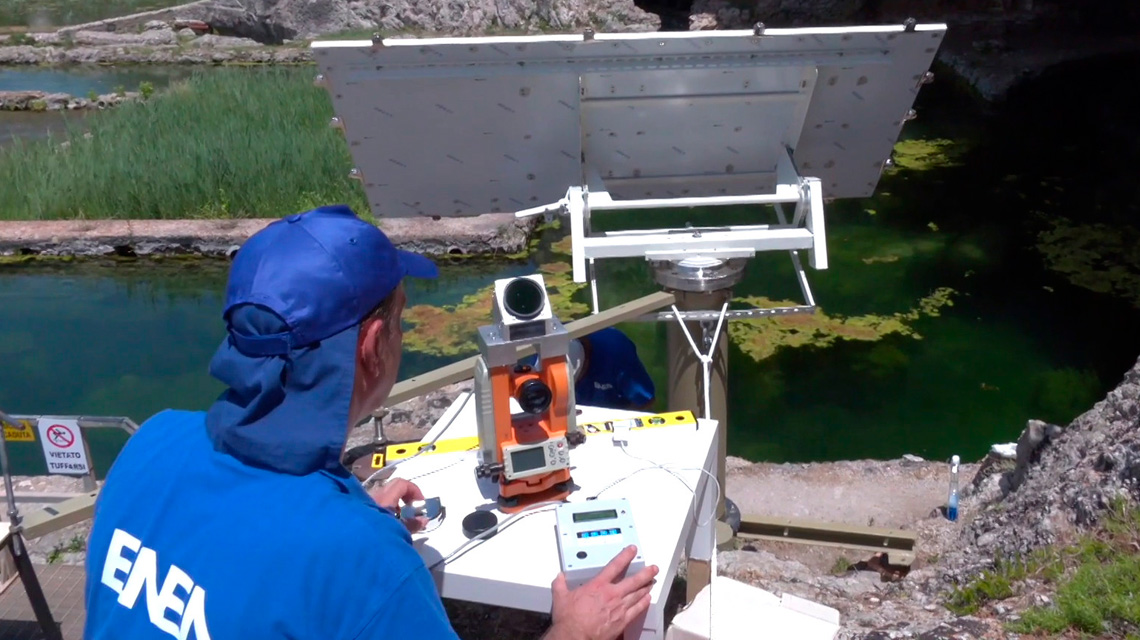Italian National Agency for New Technologies, Energy and Sustainable Economic Development

Cultural heritage: ENEA determines orientation of Emperor Tiberius’ Summer residence
An ENEA-patented electronic solar compass which provides very accurate measurements has made it possible to determine the exact orientation of the statues in the Emperor Tiberius’ Summer villa in Sperlonga (Latina) during the winter solstice.
The experiment, the result of a collaboration among researchers from the ENEA Frascati Research Center, archaeo-astronomers from the Astronomical Observatory of Genoa and Anayansi Forlinian, an architect expert in energy and environment solutions, aimed to ascertain if the 1st century AD designer/builder purposely created and positioned elements aligned along a specific astronomical direction. The surveys conducted with the ENEA solar compass revealed an alignment of the niches too precise to be casual (within two tenths of a degree), in the direction in which the sun set over the sea around 21 December at the time of Tiberius. This discovery makes the hypothesis probable that the crescent-shaped recess contained a structure suitable for serving as a viewfinder, indicating the point of sunset during the winter solstice, so as to project its own shadow on the entrance to the cubiculum of Tiberius.
In this regard, it has been hypothesized that this structure may have been the statue of "Andromeda chained", found in the sea near the cave of Tiberius and preserved in the archaeological museum in Sperlonga. The statue, with her arms raised, recalls the chains with which, according to legend, she was bound to a rock by her father as a sacrifice to a sea monster to atone for her mother's sin of pride.
To carry out the measurements, the researchers designed and built an innovative astronomical instrument, named "Solstice Converter", consisting of a flat mirror and relative alignment system, oriented as to reflect the rays coming from the Sun in the same direction as the winter solstice.
“Despite the complexity of installing the Solstice Converter in an impervious archaeological site like the Sperlonga cave, the experiment allowed to verify the existence and functionality of the 'Tiberius Milestone' at the winter solstice during a different season, with better weather conditions than winter”, explained ENEA researcher Paolo Di Lazzaro.
